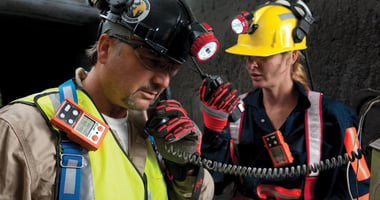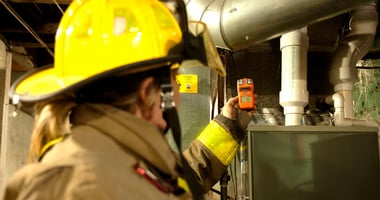Hard hat, collar, belt, shoe? If you ask workers where their personal gas detectors belong, you’ll likely get an array of answers, all with different reasons behind them.
The confusion likely comes from the false notion of the “detection range.” A detection range is described as the distance from which a personal gas monitor can detect gas; for example, “my gas detector will pick up gases from 10 feet away.”
The reality, however, is that gases need to come in contact with an instrument’s sensors in order to detect them.

You might be thinking, “that’s what a pump is for,” but that logic is also flawed. Think of it this way: a pumped instrument draws in air at between 250-500ml per minute. An adult male typically inhales 30 liters per minute while walking. Therefore, a pump would need to be 60-120 times more powerful in order to match that of a human breathing. Thus, personal gas detectors should be worn in a worker’s breathing zone, which OSHA defines as “a hemisphere forward of the shoulders within a radius of approximately six to nine inches.” A collar, lapel, or breast pocket usually meets those criteria. This location also keeps the instrument visible so you can see any alerts if your hearing is impaired while working in a high-noise environment.
What about when you’re working in an environment with H2S? Given that it’s heavier than air, should you wear the monitor lower on your body, attached to a shoe or belt? The gas might be detected faster, but the likelihood that the gas detector will fall off, become damaged, or that you simply won’t be able to hear the alarm makes it a questionable practice. When it comes to your safety, why take chances? Wear your gas detector in the breathing zone, correct anyone you hear talking about detection ranges for personal gas monitoring.
Most of all, stay safe out there.



